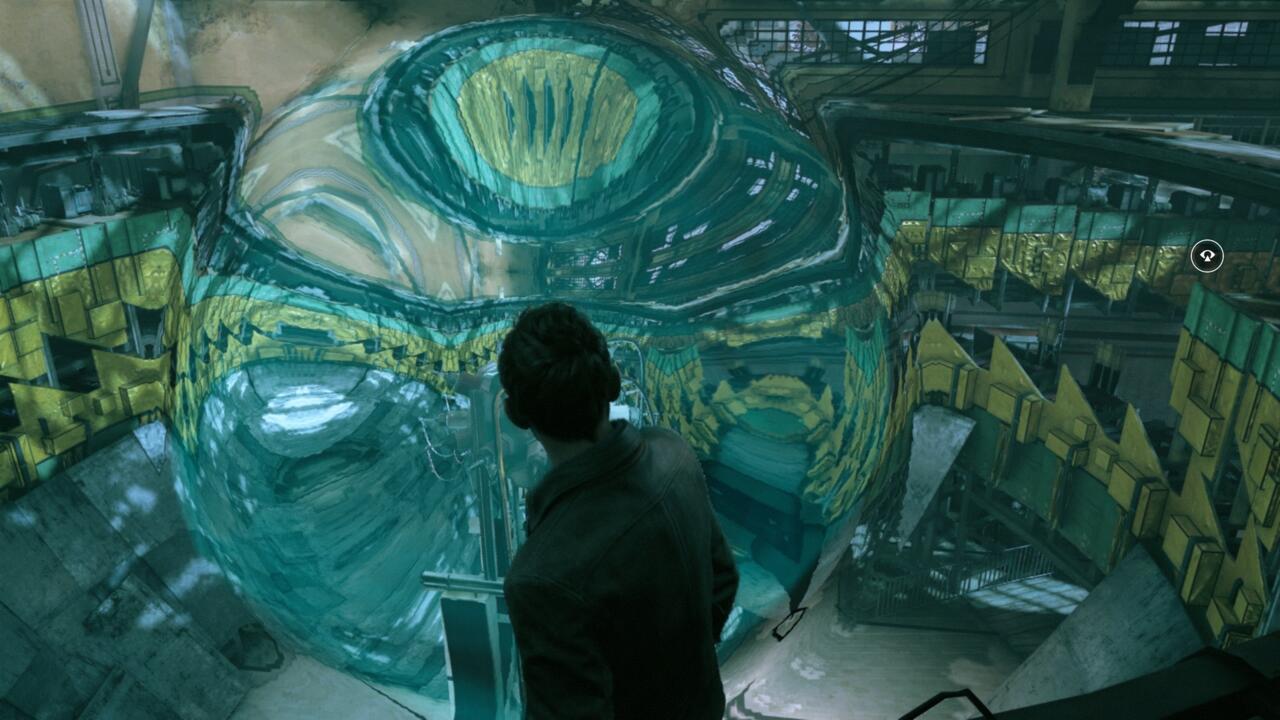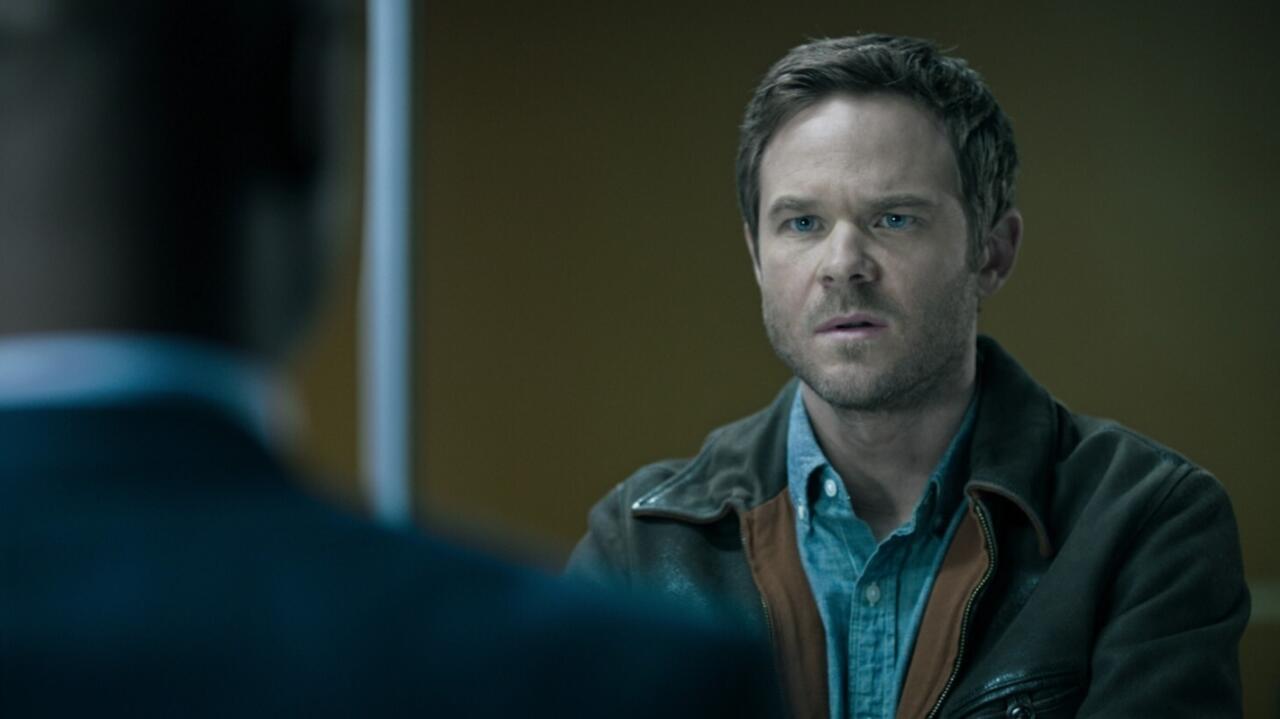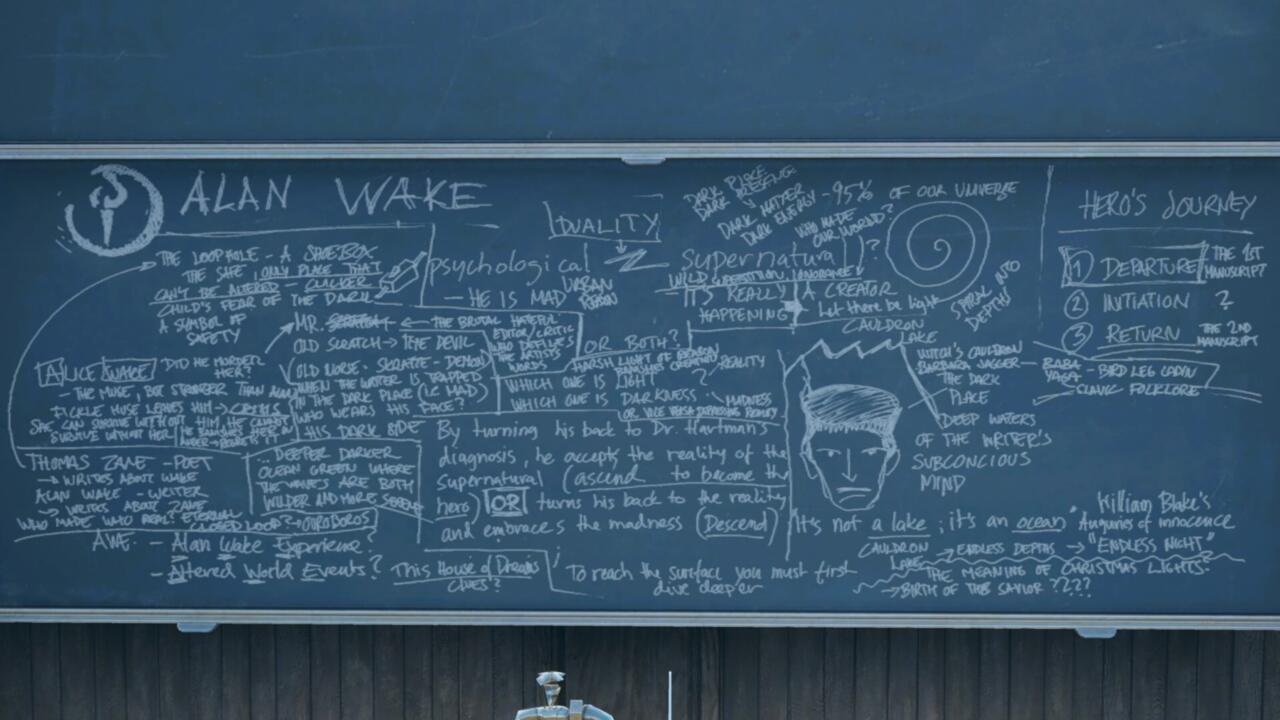Warning: This article contains some vague spoilers for Alan Wake 2, but you might consider them spoilers nonetheless. There are also a bunch of spoilers for Quantum Break.
I admit to being a Quantum Break Enjoyer, despite Remedy's time travel-slash-TV show action game receiving a mixed reaction from just about everyone else on its release (GameSpot awarded it a 6 at the time). Flawed though it might be, Quantum Break still delivers on the things I like about Remedy in general. It's a game with a lot of ambition, expanding on the transmedia ideas of the Max Payne and Alan Wake games, and it's one that puts a serious emphasis on its twisting, obviously well-planned story.
As a writer of time travel stories myself, I appreciate it most for the amount of research on display, and the pains of care and accuracy taken to tell a smart sci-fi story with characters who make sense in that framework. I guess I care about Quantum Break because it's clear to me that Remedy did, too.
Remedy doesn't own the intellectual property rights to Quantum Break, though--Microsoft does. And so there has never been a Quantum Break 2, despite the fact the game leaves open a lot of doors that could lead to a sequel. Still, a lot of the good ideas and DNA developed in creating Quantum Break led to Remedy's excellent post-Microsoft project, Control, which itself represents a big shift in Remedy's approach to games. Control and Alan Wake 2 are both weirder, more surreal, and more stylized than past Remedy games (not to mention more unabashedly and interestingly Finnish). The studio appears to be more comfortable with itself and the kinds of games it wants to make, and is taking big, exciting swings as a result.
So while Remedy's last two games have undoubtedly been their best, it seems Quantum Break is destined to remain something of a footnote in the history of this new era. Meanwhile, the game itself grows dusty in the attic of the video game canon, stuck in a legal limbo that means it'll sit quietly out of sight until it is forgotten.
Or at least, in any other case, it would have. But then came Alan Wake 2.

While Control kicked off the "Remedy Connected Universe" that bridges the stories of Remedy's titles into a sort of giant multiversal milieu, Alan Wake 2 really starts to show off the implications of the premise. With some side plots and characters, it suggests that the multiverse affects people in some strange and unknowable ways, developing it as a dread-inducing cosmic horror concept.
Alan Wake 2's multiversal plot lines also suggests that, while Quantum Break isn't officially a part of the RCU and not legally Remedy's property, the developer still cares about the game, its story, and the mind-bending time travel implications it set forth. And if the story of Remedy reclaiming of Alan Wake is anything to go by, one wonders if there might be some additional Quantum Break in Remedy's future.
In Alan Wake 2, Remedy uses the existence of Quantum Break as a way to suggest the expansiveness of its multiverse and the effects that multiverse can have on the people who live within it. The game expresses the concept through Tim Breaker, played in the game by actor Shawn Ashmore. Breaker starts off as just another character in Alan Wake 2--he's the sheriff of the game's main setting, the Washington town of Bright Falls, and works with protagonist FBI Agent Saga Anderson as she investigates the brutal, ritualistic murders taking place in the area.
Then, mid-conversation, Tim Breaker vanishes into thin air.

We later find Breaker in the Dark Place, the evil alternate dimension at the center of the Alan Wake games and in which Alan, the second playable character in Alan Wake 2, is trapped. Breaker thinks he's been brought to the Dark Place by Warlin Door, a character Alan interacts with during a surreal talk show he keeps experiencing, but he's unsure why. Breaker also talks about dreams and memories from lives he hasn't lived, and the game implies these could be memories from Quantum Break.
Ashmore also plays protagonist Jack Joyce in Quantum Break, and fans are pretty much settled on the idea that Warlin Door is a (non-copyright-infringing) version of Martin Hatch, a pseudo-antagonist from that game. ("Warlin Door" is basically what "Martin Hatch" would be if you put it through a Wario-like name generator.) The inclusion of both characters, and the fact that there are hints at their other depictions bleeding into these versions of them, is a reminder that Remedy considers Quantum Break at least worthy of note among its stories. It might not be able to include Quantum Break directly in Alan Wake 2 and the rest of the RCU, but it doesn't want to leave it to molder in the attic, either.
And the nods to Quantum Break might actually suggest more about the on-going Remedy stories than is first apparent. Though Quantum Break isn't as weird and supernatural as Control or Alan Wake 2, it focuses on an element that AW2 in particular seems to be hinting could be a very big deal: time travel.
A quick primer on Quantum Break. Jack's best friend, Paul Serene, invents a time machine, and that time machine "breaks" the flow of time. The story mostly concerns Jack and Paul battling each other while trying to use time travel to correct this problem by undoing or changing future events, but the characters struggle to succeed in those endeavors. Quantum Break's take on time travel, which is actually pretty rigorous and even fairly scientifically accurate, is that the past is, seemingly, immutable. Characters keep attempting to alter events through time travel, but their influence winds up being essential to the events occurring as they experience them. The question of whether you can change the past becomes almost an ideological one as people in the story keep trying, and failing, to change their fates, but the game never quite definitively states that it's impossible to do so.

Alan Wake 2 has timeline weirdnesses of its own. Time loops are a major part of the plot for Alan as he tries to navigate the Dark Place, and he often experiences the same events over and over from different points of view. And without getting too spoilery, there are several moments when an event in a later part of the story is the cause of an effect that takes place in an earlier part.
It's not just Alan Wake 2 that's playing with the flow of time. There's a little of this in Control, as well--at the end of the AWE expansion that directly connects Control to Alan Wake 2, an alarm that sounds in the Federal Bureau of Control that notifies the characters of supernatural happenings in Bright Falls is apparently coming from two years in the future.
These time-breaking moments are a whole lot like the plotting of Quantum Break, and they suggest that time travel is something that's on the minds of the developers as they're advancing the stories of the RCU. The greater questions of physics and metaphysics, whether it's possible to alter the past to rewrite the future, time paradoxes, and the nature of determinism or destiny, haven't come up yet in Alan Wake 2, but the runway is very much there.
These aspects of Alan Wake 2's story make Quantum Break continue to feel relevant to what Remedy is building, even if it can't be a direct part of the story.

Or can it?
The original Alan Wake was released in 2010 and, like Quantum Break, was also published by Microsoft. Remedy later made a small-scale spin-off called Alan Wake's American Nightmare, but it seemed for years that a proper Alan Wake 2 would never be. And then Remedy regained the rights to Alan Wake in 2019. Alan appeared in Control, the original game was re-released in a remastered form, and now we have Alan Wake 2.
It doesn't seem too far out of the realm of possibility that a similar story could unfold with Quantum Break. With Alan Wake 2, Remedy lays some foundations that could become a road leading to a future Quantum Break game. Despite the original's weak reception, there are plenty of fascinating elements about Remedy's take on time travel that would be worth revisiting--and clearly, some of those ideas are already inspiring new plot points and characters in ongoing RCU stories.
It's also worth noting that, to some degree, the meta narrative goes both ways--Quantum Break has its nods to the Alan Wake story too. A specific blackboard found in Quantum Break has a big, lengthy breakdown of the Alan Wake story and mentions elements that would later appear in Alan Wake 2. The phrase "altered world events," a concept central to Control, also shows up on the blackboard.

Even more interesting is the live-action trailer for "Return," a story about two FBI agents investigating Alan before he, apparently, escapes the Dark Place. The Return trailer in Quantum Break isn't exactly what happens in Alan Wake 2, but even just this quick look is pretty similar in both themes and plot points. The trailer's best shot is even replicated exactly in Alan Wake 2.
These might just be fun Remedy Easter eggs, but their inclusion at least suggests that Remedy could have been thinking about a larger, more connected story between its games during Quantum Break's creation. And that, in turn, makes it more likely that Remedy has ideas floating around about how Quantum Break could fit into its larger unfolding narrative, if the chance to loop it in were to arise.
At the very least, those Quantum Break Enjoyers among us have reason to be excited. It's clear that Remedy has no intention of forgetting about its Xbox One game, even if it can't fully embrace it as part of its new narrative direction. The best parts of Quantum Break live on, in some form or fashion, and they seem to serve as inspiration for even more weird and fascinating twists to come.

